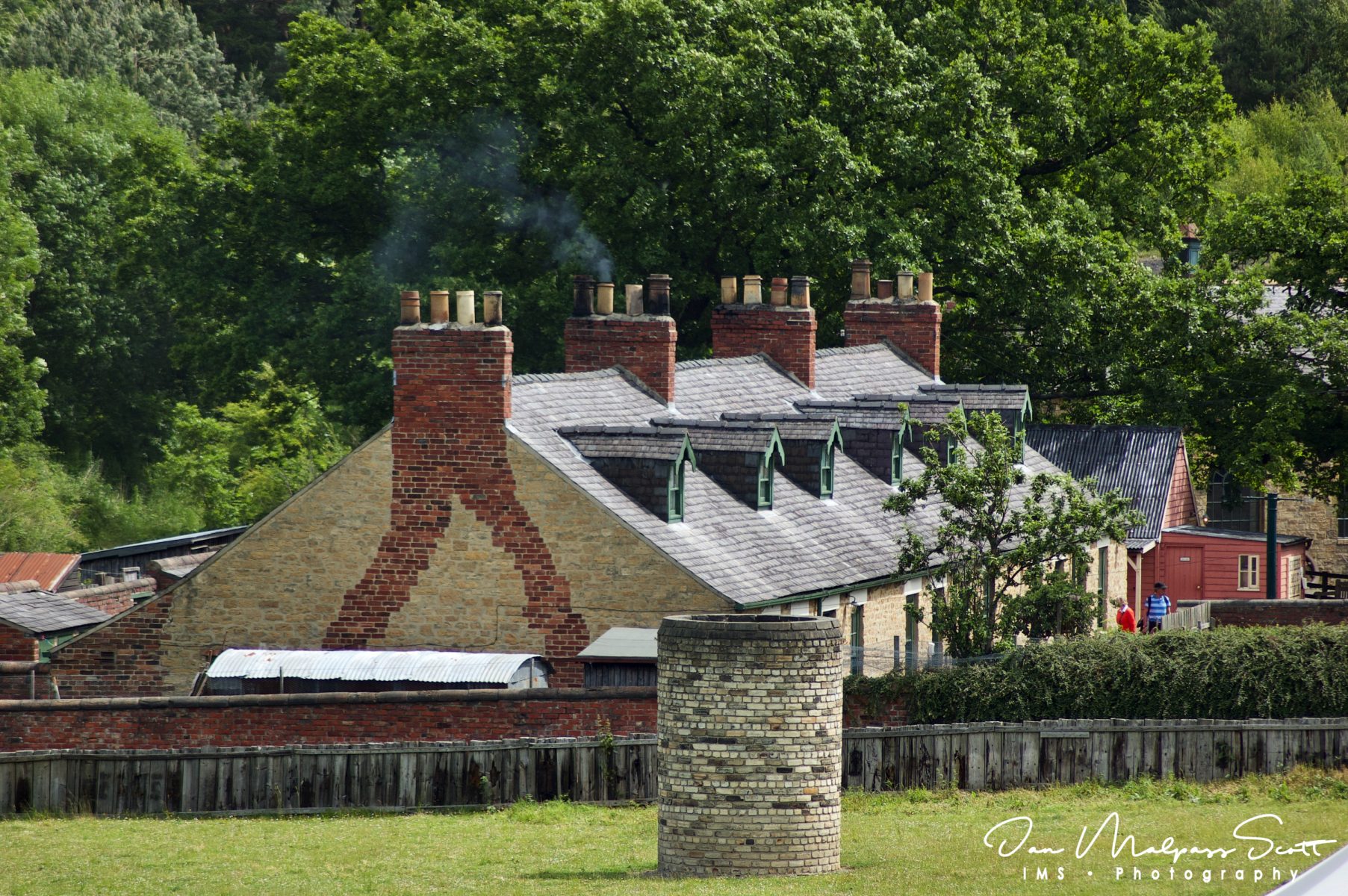![]()
Francis Street at Beamish Museum, Co. Durham.
The row of six miner’s cottages in Francis Street represent the tied-housing provided by colliery owners to mine workers. Relocated to the museum in 1976, they were originally built in the 1860s in Hetton-le-Hole by Hetton Coal Company. They feature the common layout of a single-storey with a kitchen to the rear, the main room of the house, and parlour to the front, rarely used (although it was common for both rooms to be used for sleeping, with disguised folding “dess” beds common), and with children sleeping in attic spaces upstairs. In front are long gardens, used for food production, with associated sheds. An outdoor toilet and coal bunker were in the rear yards, and beyond the cobbled back lane to their rear are assorted sheds used for cultivation, repairs and hobbies. Chalkboard slates attached to the rear wall were used by the occupier to tell the mine’s “knocker up” when they wished to be woken for their next shift.
No.2 is presented as a Methodist family’s home, featuring good quality “Pitman’s mahogany” furniture; No.3 is presented as occupied by a second generation well off Irish Catholic immigrant family featuring many items of value (so they could be readily sold off in times of need) and an early 1890s range; No.3 is presented as more impoverished than the others with just a simple convector style Newcastle oven, being inhabited by a miner’s widow allowed to remain as her son is also a miner, and supplementing her income doing laundry and making/mending for other families. All the cottages feature examples of the folk art objects typical of mining communities. Also included in the row is an office for the miner’s paymaster. In the rear alleyway of the cottages is a communal bread oven, which were commonplace until miner’s cottages gradually obtained their own kitchen ranges. They were used to bake traditional breads such as the Stottie, as well as sweet items, such as tea cakes. With no extant examples, the museum’s oven had to be created from photographs and oral history.


